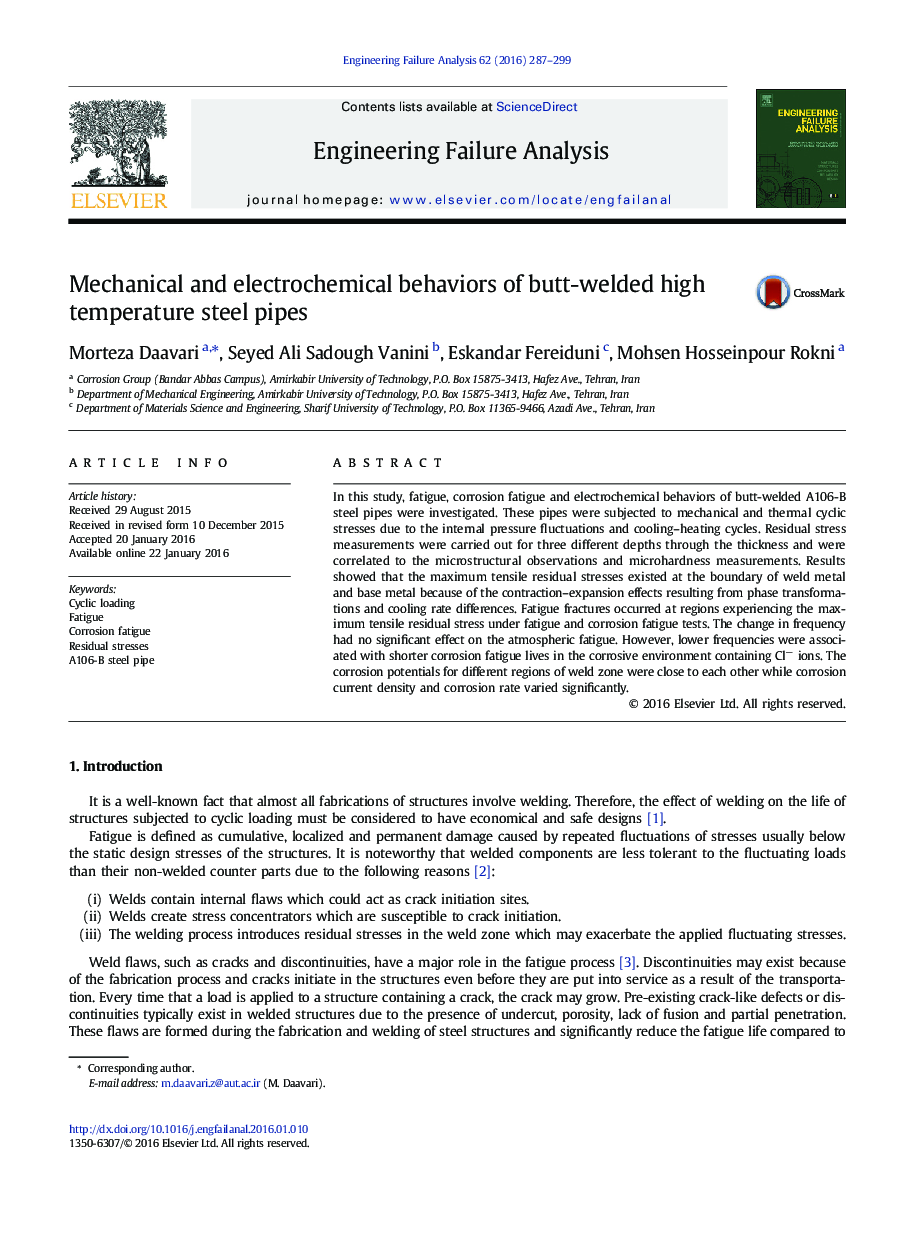| Article ID | Journal | Published Year | Pages | File Type |
|---|---|---|---|---|
| 763326 | Engineering Failure Analysis | 2016 | 13 Pages |
•Weld metal/base metal boundary had the highest tensile residual stress.•Cl− ions resulted in drastic decrement of corrosion fatigue life.•Frequency had more effect on corrosion fatigue life than fatigue life.•Corrosion potentials of the whole area of the weld were almost the same.•Corrosion current density and corrosion rate varied in different zones of weld.
In this study, fatigue, corrosion fatigue and electrochemical behaviors of butt-welded A106-B steel pipes were investigated. These pipes were subjected to mechanical and thermal cyclic stresses due to the internal pressure fluctuations and cooling–heating cycles. Residual stress measurements were carried out for three different depths through the thickness and were correlated to the microstructural observations and microhardness measurements. Results showed that the maximum tensile residual stresses existed at the boundary of weld metal and base metal because of the contraction–expansion effects resulting from phase transformations and cooling rate differences. Fatigue fractures occurred at regions experiencing the maximum tensile residual stress under fatigue and corrosion fatigue tests. The change in frequency had no significant effect on the atmospheric fatigue. However, lower frequencies were associated with shorter corrosion fatigue lives in the corrosive environment containing Cl− ions. The corrosion potentials for different regions of weld zone were close to each other while corrosion current density and corrosion rate varied significantly.
